So much in the social care system revolves around brokerage. When brokerage runs smoothly care packages are placed within days (or even hours) to approved providers. Service users soon start receiving the care they need and people are released sooner from hospitals following illness or surgery.
In an ideal world, brokerage teams would have the capacity to work more strategically – helping local provider networks improve quality of care and adapt provision to meet planned needs. Perhaps moving beyond ‘by the minute’ brokerage to look at outcomes and impact. They could be the enablers of a more robust and effective social care service.
The opposite is also true. When brokerage gets overwhelmed by rising demand or turbulence in the provider network it can become a bottleneck. No matter how hard teams work to keep up, events move too quickly.
This is where most brokerage teams currently find themselves. Growing demand and staff shortages (transient and long-term) among providers owing to Brexit, Covid and other factors, make it a struggle to keep up. The focus is on keeping the wheels turning as well as possible.
How Quickly Could Brokerage Be More Streamlined?
Care brokerage can be streamlined within two weeks.
What it takes is to move away from a process that runs on emails, spreadsheets and phone calls to a secure, cloud-based eBrokerage platform. This transition typically takes just two weeks to complete and no more than four even for an authority that wants a high degree of customisation.
eBrokerage by UDMS is a unique, secure, cloud-based brokerage system. It’s also easy to procure through the G-Cloud 12 framework, via Ulysses eBrokerage Cloud Software.
A streamlined care brokerage system won’t solve all of the challenges that social care faces. But it will certainly make a pivotal part of the process operate much more effectively. This will help take a lot of stress and uncertainty out of the lives of brokerage teams, providers and many service users.

